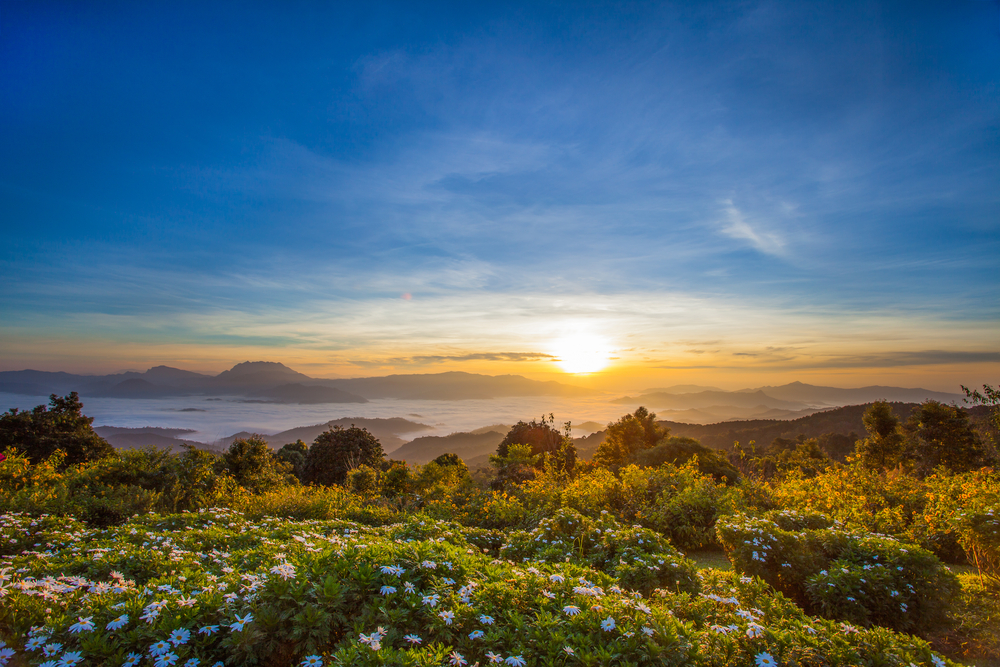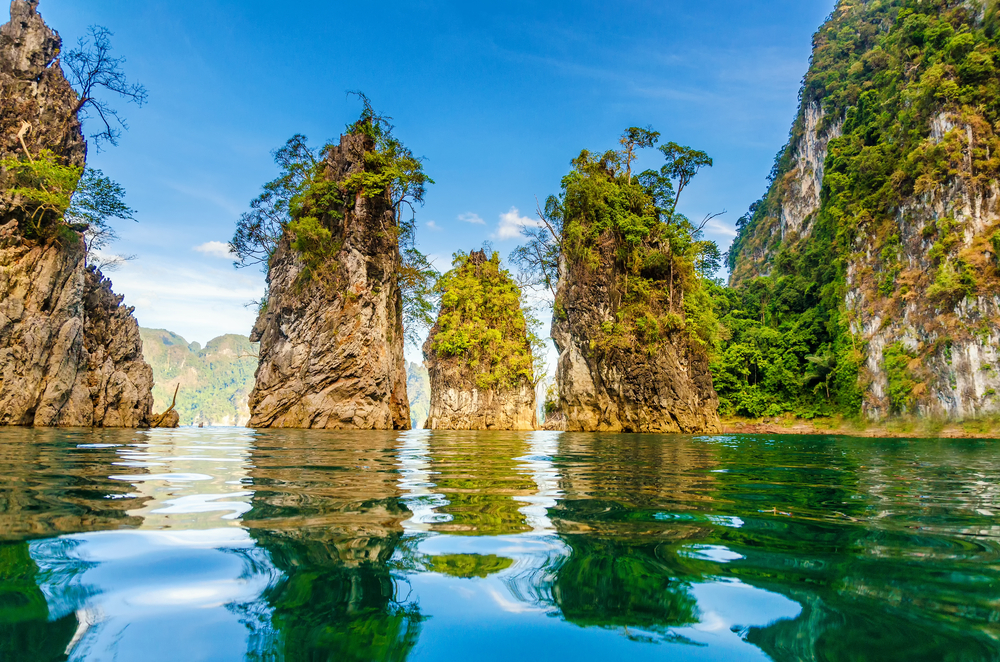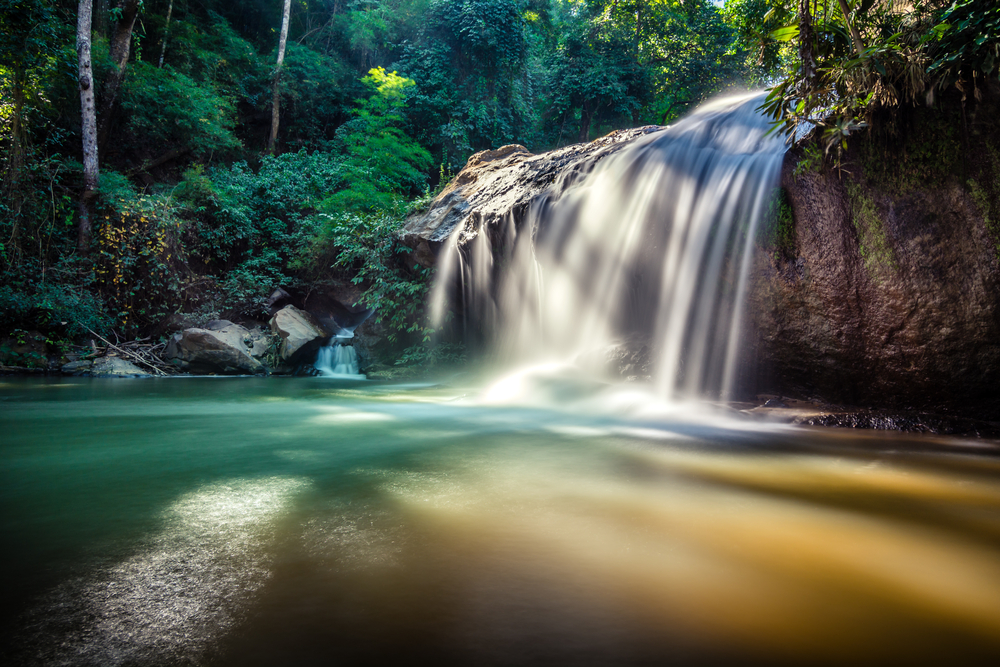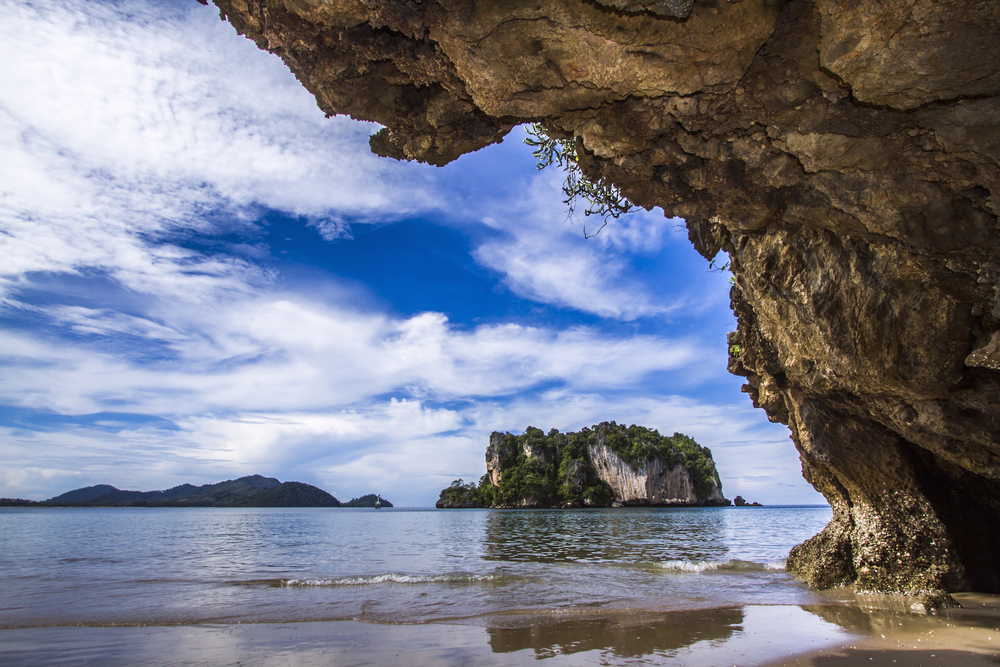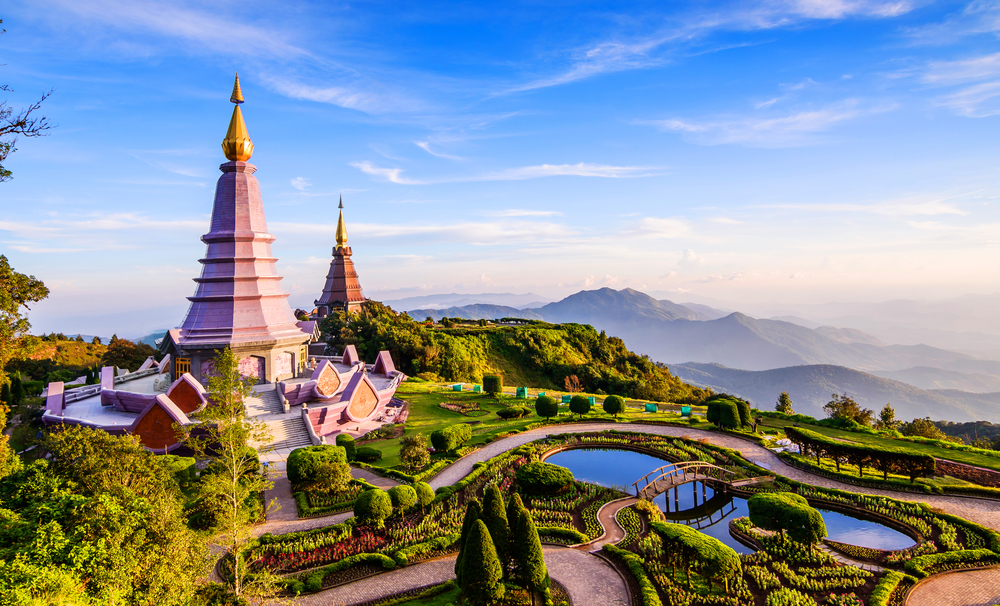Huai Nam Dang Overview
Huai Nam Dang National Park (อุทยานแห่งชาติห้วยน้ำดัง) is a striking natural reserve located in northern Thailand, spanning parts of Chiang Mai and Mae Hong Son provinces. Covering an area of approximately 482 square kilometers (186 square miles), the park is perched along the rugged Thanon Thong Chai Range.
Known for its mist-shrouded vistas and vibrant natural beauty, it offers visitors a chance to immerse themselves in an enchanting blend of mountainous terrain, lush forests, and captivating wildlife.
The park’s landscape is dominated by high peaks and rolling hills, with Doi Chang being one of its most prominent mountains, reaching a height of 1,962 meters (6,437 feet) above sea level. The terrain is interspersed with picturesque valleys and streams, with the most famous feature being the sunrise views over the sea of mist at Doi Kiew Lom.
During cooler months, this natural phenomenon blankets the valleys in a dense fog, revealing an ethereal panorama. The park is also home to several waterfalls, including the Mae Yen and Mae Pang waterfalls, which are surrounded by dense, evergreen forests teeming with ferns, orchids, and towering trees.
Huai Nam Dang National Park hosts a rich variety of flora and fauna. Its mixed deciduous and montane forests provide habitat for several mammal species, such as barking deer, wild boar, and the occasional Asiatic black bear. Birdwatchers can marvel at the diverse avian life, including hornbills, bulbuls, and warblers. Butterflies add vibrant flashes of color to the park’s verdant greenery, especially during the rainy season.
One of the park’s highlights is its hot springs, such as Pong Nam Ron Tha Pai, where visitors can enjoy therapeutic mineral baths amidst a serene natural setting. The park also boasts an extensive network of trails that allow hikers to explore its diverse landscapes, ranging from dense forests to panoramic hilltops.
Camping is a popular activity, particularly during the winter months when cool temperatures and clear skies make it an ideal retreat for nature lovers. Local guides are often available to lead treks or provide cultural insights into the surrounding communities, many of which are home to hill tribes like the Karen and Hmong.
Huai Nam Dang National Park faces several conservation challenges, including deforestation and the encroachment of agricultural activities. However, effective management strategies and local community involvement have helped curb these issues to an extent. Efforts such as reforestation programs and eco-tourism initiatives aim to ensure the park’s long-term preservation. These measures have also strengthened the area’s biodiversity, making Huai Nam Dang a beacon of conservation success in northern Thailand.








































































